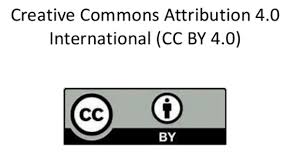Public health implications of microbial findings in commercially canned tomatoes in West Africa
DOI:
https://doi.org/10.47440/JAFE.2025.6101Keywords:
Microbes, Disease, Health, Spoilage, TomatoesAbstract
Canned tomatoes are widely consumed, but microbial spoilage can compromise their quality. This study aimed to identify the microorganisms responsible for spoilage in various brands of canned tomatoes from West Africa. Six popular brands were purchased from markets in Nigeria, Benin, and Ghana. Microbiological screening involves culturing, morphological, and biochemical techniques to identify spoilage organisms. Total bacterial counts observed in the study were Salsa (3.4 ± 0.22 × 10³), Gino (4.2 ± 0.31 × 10³), Sarah (5.8 ± 0.35 × 10³), Ginny (3.0 ± 0.34 × 10³), Derica (2.1 ± 0.14 × 10³), and Tasty Tom (2.2 ± 0.21 × 10³). Fungal counts include: Salsa (2.4 ± 0.30 × 10³), Gino (2.3 ± 0.51 × 10³), Sarah (2.4 ± 0.21 × 10³), Ginny (5.8 ± 0.12 × 10³), Derica (2.3 ± 0.13 × 10³), and Tasty Tom (4.1 ± 0.10 × 10³). Bacterial isolates included Bacillus spp., Staphylococcus aureus, Streptococcus spp., Pseudomonas spp., and Clostridium spp., with Bacillus spp. (30%) being the most prevalent and Streptococcus spp. (10%) being the least bacteria. Fungal isolates comprised of Saccharomyces spp., Candida spp., Mucor spp., Aspergillus niger, and Penicillium spp., with Aspergillus niger (33%) being the most common while Mucor spp. (10%) being the least fungi. The study revealed significant microbial contamination in all canned tomato brands. High microbial counts indicate potential public health risks. Further research is crucial to understand the source of contamination. Implementing effective sanitization measures during production is essential to minimize spoilage and ensure food safety






 Publisher:
Publisher: 